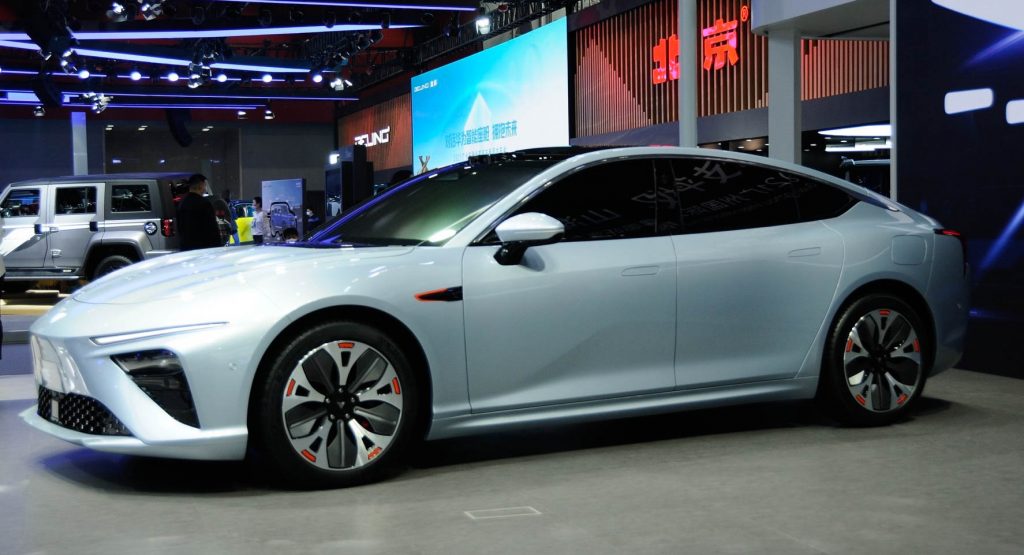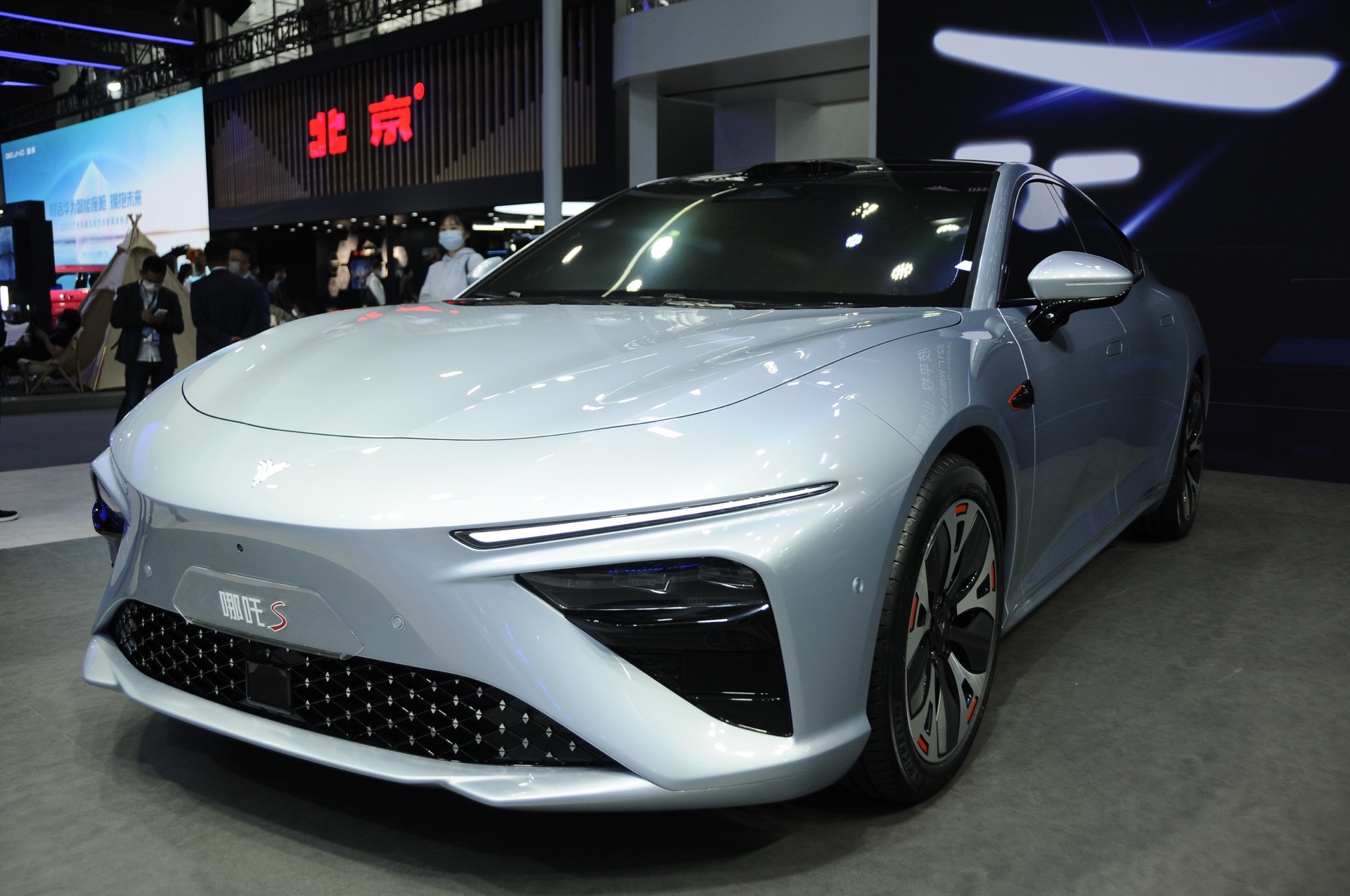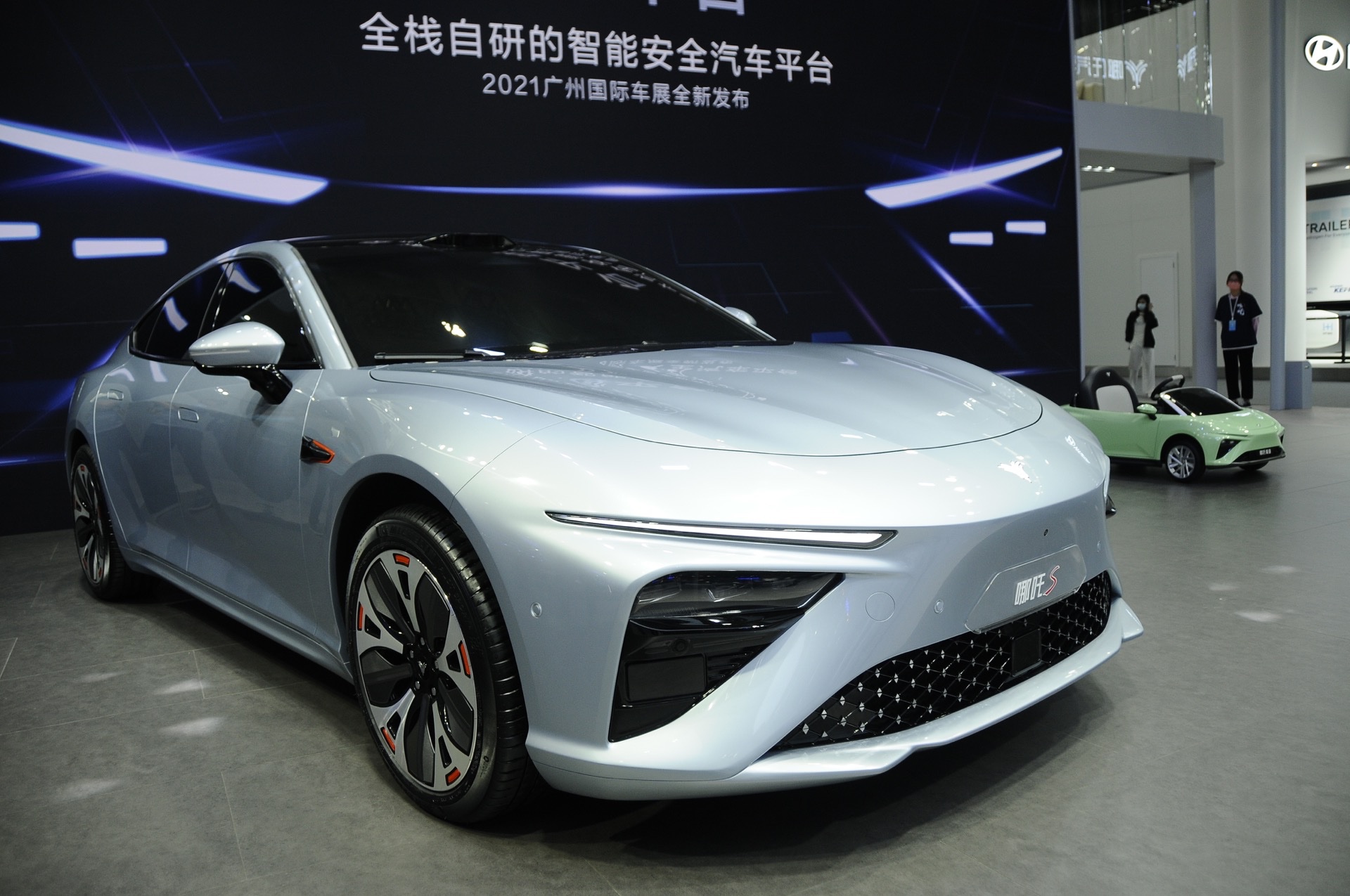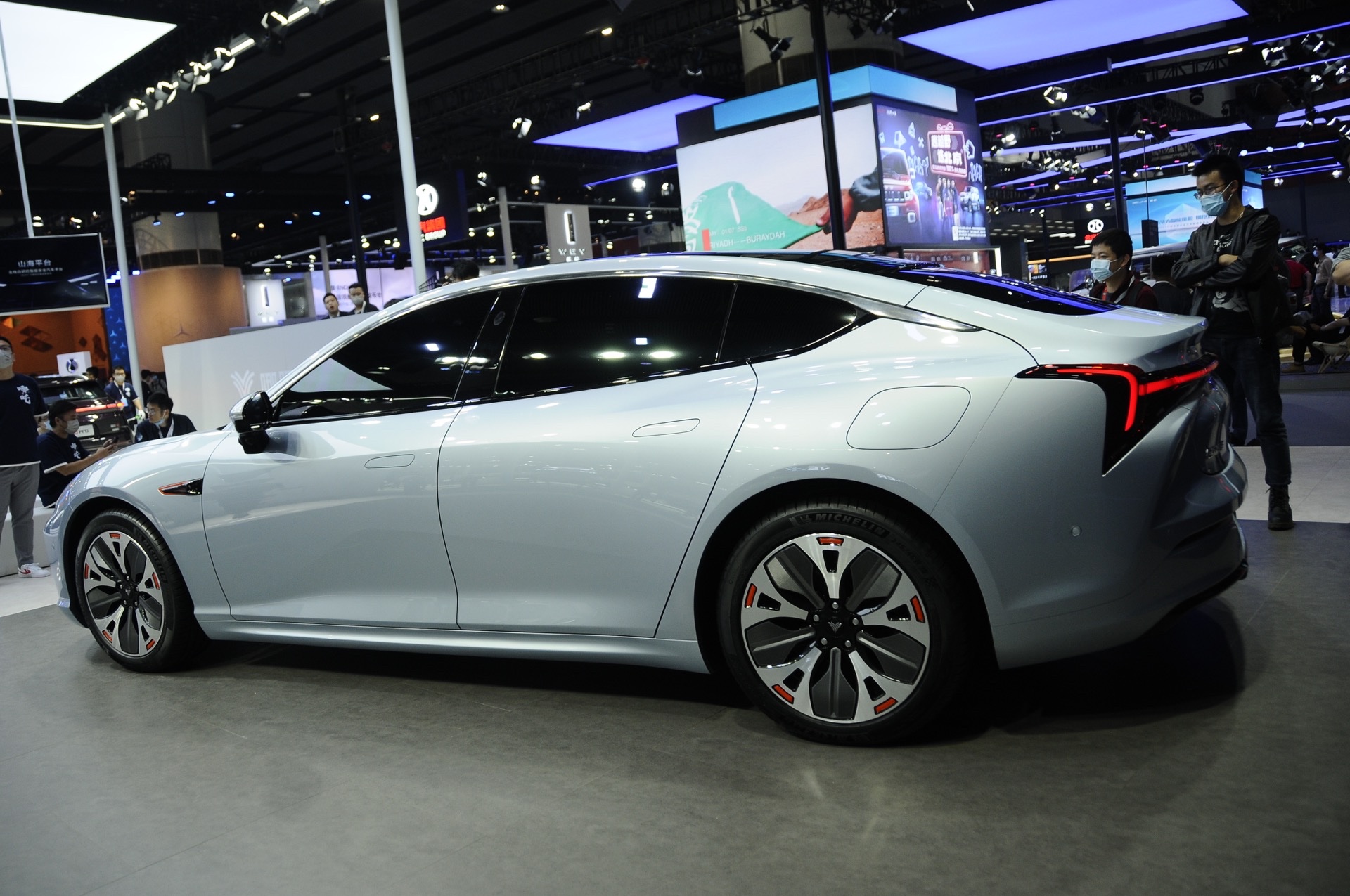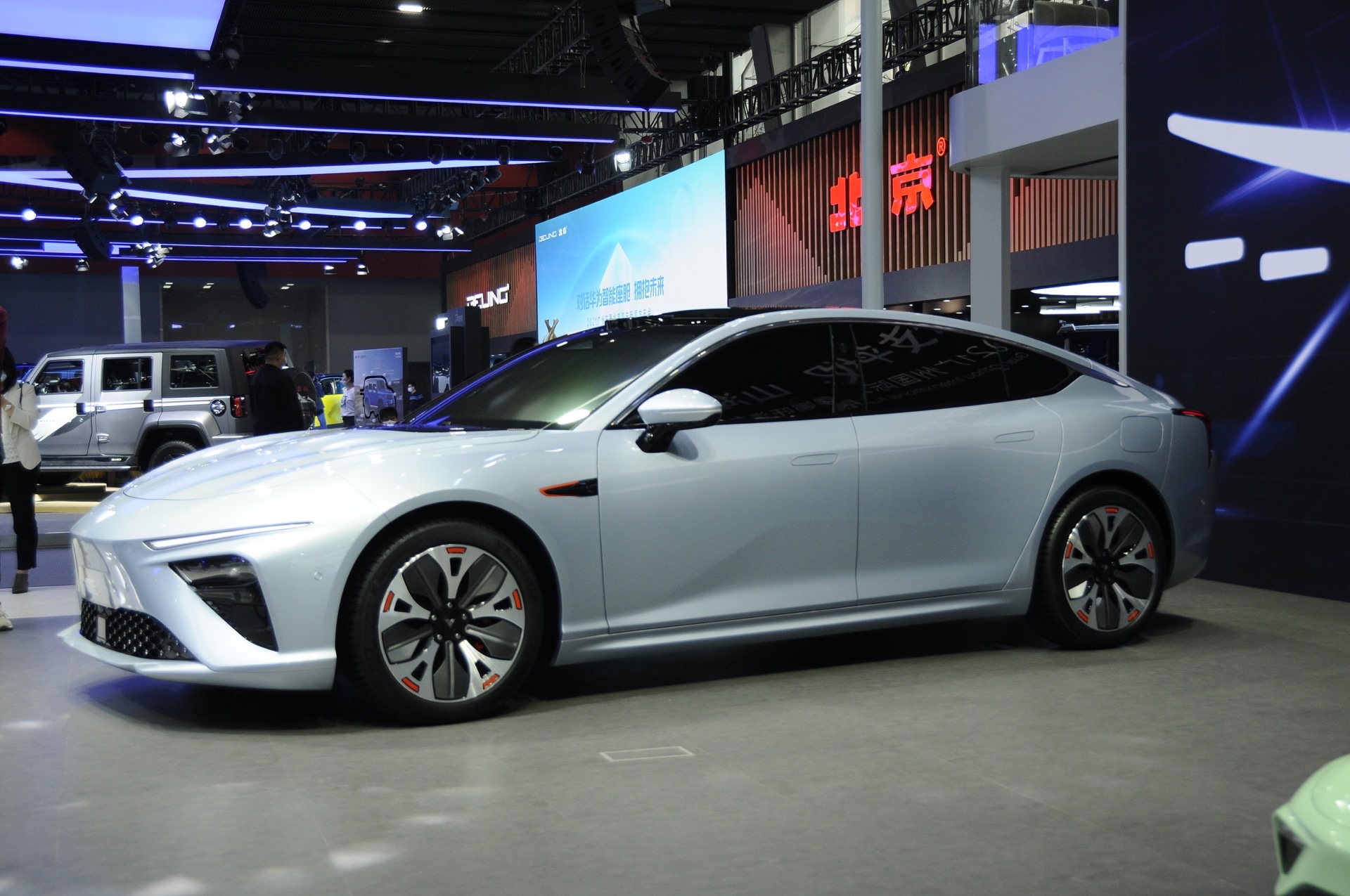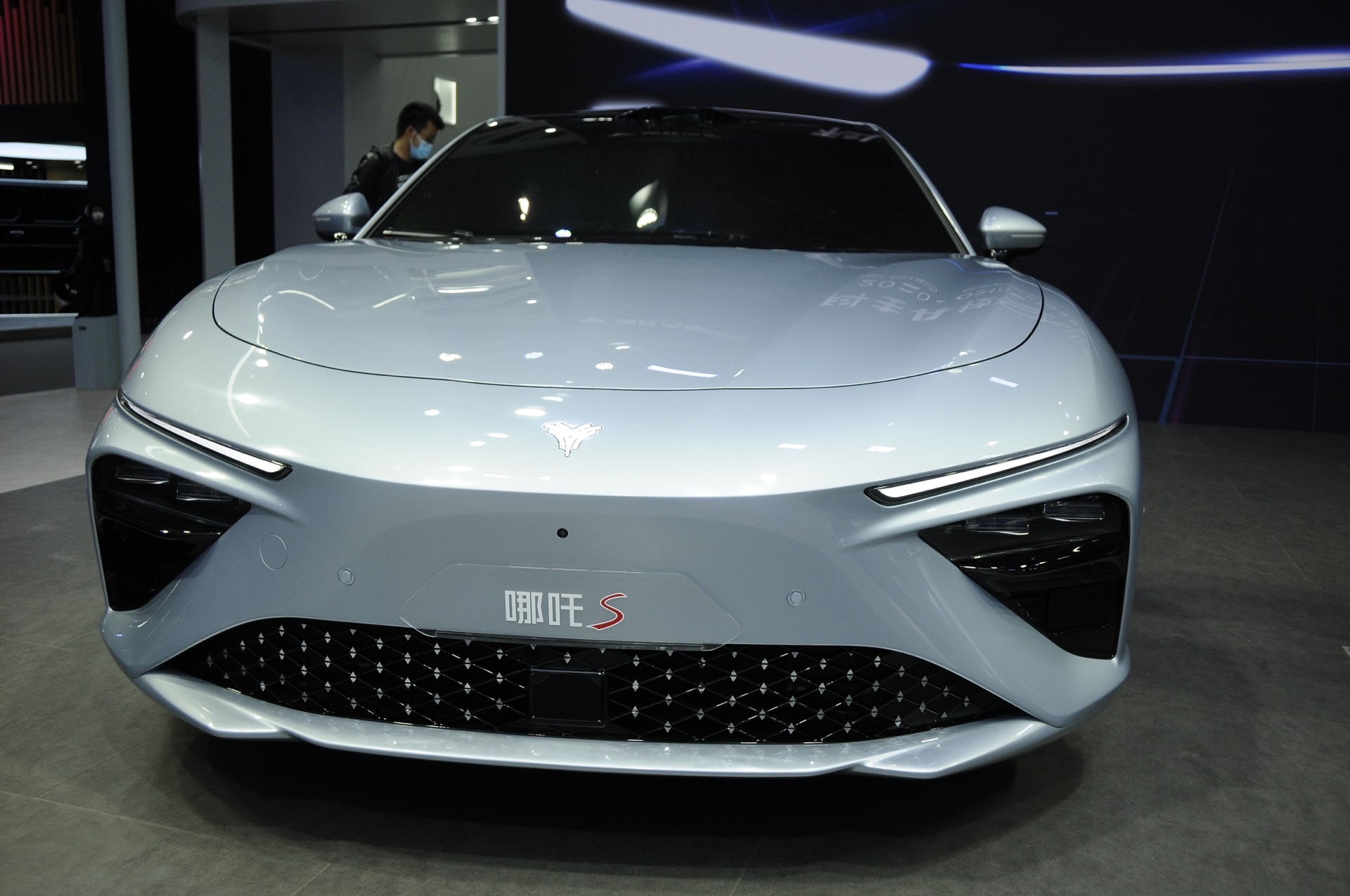Compared to some of the more outlandish concepts we’ve witnessed at the Guangzhou Auto Show, the Nezha/Neta S might look a bit restrained, and indeed it seems like something that could be close to production-ready.
Nezha, also known as Neta (both names are used, with Nezha being Chinese and Neta English), is the automotive brand of Hozon Motors. They’ve been quietly making a name for themselves within China, building fairly no-nonsense EVs that have proven to sell well.
But the Nezha S aims to add a dollop of tech into their lineup. Following on from the Eureka 03 that was showcased last year, the S boasts a plethora of tech that will rival the likes of Tesla and XPeng. It’ll supposedly be capable of Level 4 autonomous driving, using three lidar sensors and five millimeter-wave radars, as well as six cameras.
Level 4 autonomy means that the vehicle is self-driving and can react to road conditions without the need of human input. Thus, human interaction is not required in most circumstances, although the driver can override the system and take over. However, almost all automakers are currently at Level 2 autonomy, with BMW confirming that the new 7-Series will be Level 3 capable, and as far as we know there’s no legislation yet in place anywhere that would allow Level 4 operation outside predefined areas, so the Chinese company’s claims are bold, to say the least.
Read: GAC Trumpchi Invites You To Share Your Design Ideas With Futuristic Vision Emkoo Concept
Officially a concept, the production version of the Nezha S is expected to debut at the Beijing Auto Show in April next year. The automaker hasn’t released technical details about the concept’s powertrain,, but has previously stated that it will be able to hit 100 km/h (62 mph) in 4 seconds and has a range of 800 km (497 miles) on the NEDC cycle.
The Nezha S will be the first car built on the company’s new Shanhai platform and has a heavy focus on “360 security.” While precise details are sketchy, the platform will feature dual backup batteries, dual backup braking, and dual processors, as well as a system of multiple safeguards built into the battery management system.
It will also ride on a reasonably sophisticated suspension with double wishbones up front and a five-link set-up in the rear. Air suspension will be optional, while the Shanhai platform can also host a range of powertrain configurations, including a dual-motor layout that can be spec’d in either front, rear, or all-wheel drive.
That platform will support both pure EV applications as well as range-extender hybrids. While the Nezha S sedan will be the first to utilize the platform, the company expects it to support SUVs, MPVs, and coupes, with wheelbases ranging from between 2,750 and 3100 mm.




